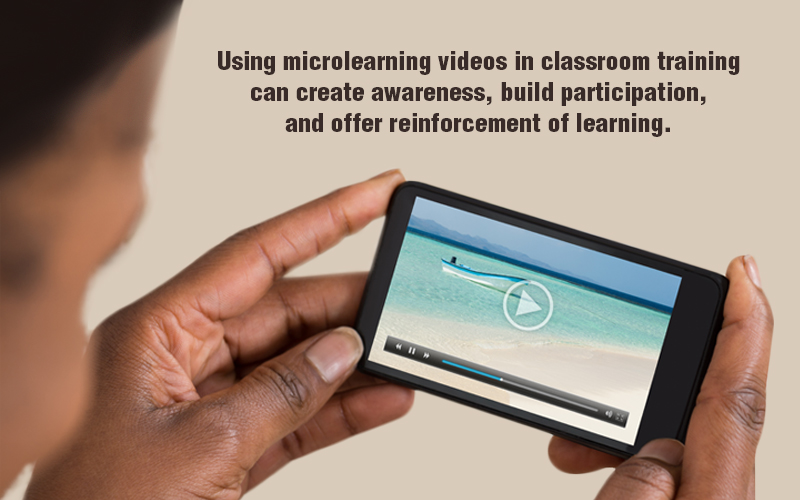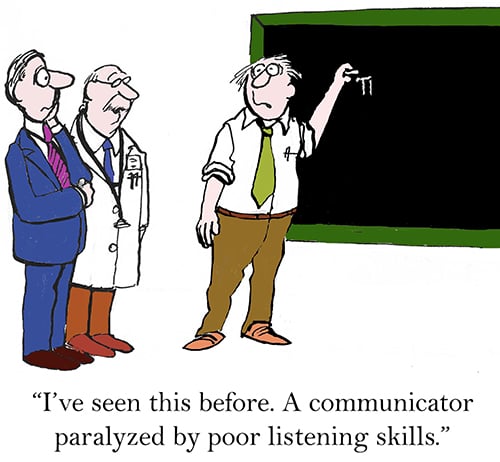Make Classroom Training Livelier with Microlearning Videos

Microlearning – Not only does it take less time to be developed and less time for learners to spend on training, but it also needs very little of the Subject Matter Expert’s (SME) time. SMEs are the most important people when it comes to first-hand experiences in their domain. They are essential in eLearning development for making suggestions, plugging gaps in the content, or choosing the right instructional strategy.
Since they are almost always very busy, it’s not easy for them to take out time for eLearning. Microlearning is one of the ways you can cut down the SME’s time – both during development, and reviews. Read on to find out about the other advantages microlearning brings to training today – particularly how it aids classroom training.
Download this compilation of tips to save SME time in eLearning design and development.
Microlearning Videos and the Classroom
Sure, microlearning facilitates on-demand learning and increases the impact of training. However, its biggest advantage in today’s training is how it is received by the millennials! These bite-sized standalone learning nuggets make your millennial workforce stick to training.
Also, microlearning videos are very effective when you have to introduce a concept to your learners, teach them a skill they should develop, a behavior they should acquire, or a task they should learn. Classroom training provides a highly interactive learning environment with plenty of opportunities for engagement. Microlearning acts as icing on the cake! Microlearning videos:
- Make the classroom training livelier with enhanced participation through polls
- Demo of complex products, something not very easy in classroom training
- Provide an overview or summary of the topic taught in the classroom
- Can be used as job-aids, for performance support or refresher training
Here’s more of how microlearning videos can help classroom training:
- Prep learners through pre-tests
- Create awareness
- Offer reinforcement in spaced intervals
Now let’s look at how microlearning videos can help with soft-skills training.
Microlearning Videos for Soft Skills Training
Soft skills training in organizations includes communication, problem-solving, work ethics, teamwork, conflict resolution, and more. Undoubtedly, most of these skills apply to the sales force, especially the big ‘C’ – Communication. Communication, as they say, is the key to personal and career success.

Training might mark the difference between poor communication and effective communication. Soft skills can be efficiently provided through microlearning, and what better format to present them than videos? Microlearning videos are short, fun, and very engaging.
Give your learners anytime access to the steps to defuse a potentially difficult conversation with a customer, for example, and you will be doubling the impact of training for them. Let me now present to you a case study.
Microlearning Videos for Soft Skills Training in the Classroom: A Case Study
Our client is a multinational company with customers ranging from animal owners and animal nutritionists to veterinarians. A very important part of their training is on soft skills since this company is largely focused on its sales force. This means their sales personnel should be able to have a powerful and productive dialogue with their customers/prospects.
Their soft skills training was being done in the classroom, and we were given the brief to convert their classroom training sessions to microlearning videos. The inputs we received (in PDF format) from classroom training included the topics shown here.
- Preparing for a sales presentation
- Creating a meeting agenda
- Practical techniques for negotiations with customers
- Conflict resolution
Keeping in mind that not all classroom training content can be converted to microlearning, we began by analyzing the existing content. The key concept of each classroom session was converted to a 2-minute, fun, engaging, and visually appealing video. Videos respect the limitations of the working memory, giving enough time for the learners to reflect on the content and connect it to their existing knowledge.
With each microlearning module addressing a single learning objective, videos were used to promote a learning culture in their workplace, to augment their classroom training.
Other formats of microlearning you can use with classroom training:
- Video Trailers
- Quizzes
- Infographics
- Digital flashcards
- Micro scenarios
- Games
Wrapping It Up!

Go ahead and build impactful soft skills training for your employees with microlearning videos! That’s not all – organizations are now increasingly using microlearning to train visitors. So whether yours is a highly technical manufacturing plant, a chemical processing facility, or even if it’s as simple as helping visitors get familiar with accessing the Wi-Fi in your office, microlearning is making its presence felt. For detailed insights on this and other eLearning trends for 2020, download our eBook now!



![What are the Best Authoring Tools to Develop Microlearning Assets [Infographic]](https://blog.commlabindia.com/hubfs/blogs/best-authoring-tools-develop-microlearning-assets-info.jpg)
![What Microlearning Is and What It Isn’t! [Infographic]](https://blog.commlabindia.com/hubfs/Imported_Blog_Media/microlearning-quick-reference.png)
